pony express
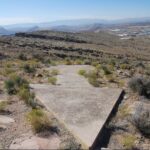
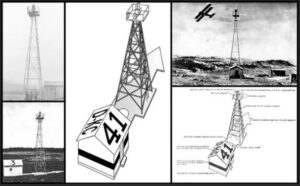 A number of years ago, I had the opportunity to go on a couple of business trips with my boss, Jim Stengel, in his plane. At that time, he introduced me to aviation charts, and I found them very interesting. You could see every airport on them, even the small private airports. You could also see every river, lake, and even pond, and they actually looked right on the map. I suppose the shapes would be off these days, due to droughts and such, but with GPS, I suppose they aren’t as necessary. Aviation charts could almost be considered a novelty now.
A number of years ago, I had the opportunity to go on a couple of business trips with my boss, Jim Stengel, in his plane. At that time, he introduced me to aviation charts, and I found them very interesting. You could see every airport on them, even the small private airports. You could also see every river, lake, and even pond, and they actually looked right on the map. I suppose the shapes would be off these days, due to droughts and such, but with GPS, I suppose they aren’t as necessary. Aviation charts could almost be considered a novelty now.
These days airmail is common, but on August 20, 1920, when the United States opened its first coast-to-coast airmail delivery route, we were just 60 years past the time when the Pony Express closed up shop. To me that is astounding…from horses to airplanes in just 60 years. When airmail got started, they didn’t have any of those aviation charts that had fascinated me on those flights with Jim. In those days, pilots had to navigate by sight…yikes!! Just imagine flying in bad weather, not to mention night flying, which was just about impossible. Some brainstorming was needed.
The Postal Service came up with a unique navigational system. The world’s first ground-based civilian navigation system was made up of a series of lighted beacons that extended from New York to San Francisco. I would think the pilots would have to be quite experienced to follow this plan. The plan included a series of 70-foot concrete arrows, placed ten miles apart from coast to coast. The arrows were painted bright yellow, and at the center of each arrow, stood a 51-foot steel tower. On top of the tower was a million-candlepower rotating beacon. Below the rotating light were two course lights pointing forward and backward along the arrow. The course lights flashed a code to identify the beacon’s number. A generator shed at the tail, or feather end of each arrow powered the beacon and lights, if that became necessary.
Like the railroad, the Airmail system was built in stages. By 1924, just a year after Congress funded it, the line of giant concrete markers stretched from Rock Springs, Wyoming to Cleveland, Ohio. The next summer, it reached all the way to New York and then, by 1929, it extended all the way to San Francisco. It worked so well, that in 1926, the new Aeronautics Branch in the Department of Commerce, now known as United States Postal Service, proposed a 650-mile air mail route linking Los Angeles to Salt Lake City. That route was designated as Contract Air Mail Route 4 (CAM-4). The system seemed well on its way to modernizing mail delivery forever, but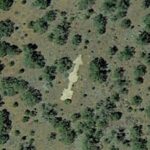
 before long, the advances in communication and navigation technology made the big arrows obsolete, as new technology will. By the 1940s, the Commerce Department decommissioned the beacons. To help the war effort, the steel towers were torn down and sent to be used elsewhere. Today, many of the arrows have been removed, but there are still a few that remain. I suppose if you spent some time scanning Google Earth, or flying along the old routes, you might be able to see a few of these old pieces of history.
before long, the advances in communication and navigation technology made the big arrows obsolete, as new technology will. By the 1940s, the Commerce Department decommissioned the beacons. To help the war effort, the steel towers were torn down and sent to be used elsewhere. Today, many of the arrows have been removed, but there are still a few that remain. I suppose if you spent some time scanning Google Earth, or flying along the old routes, you might be able to see a few of these old pieces of history.
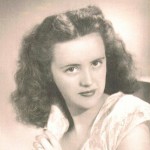 As my Aunt Evelyn Hushman’s birthday approaches, I wanted to look back to the years when she was growing up. She was the oldest of nine children, and so in many ways she became like a second mom to the younger kids…but, not exactly, in that my grandmother, Hattie Byer was a stay at home wife and mom all the years of her marriage. That was pretty much how it was in those days. I don’t know if shyness or being outgoing is something that a person is born with or not, but as the oldest child, with eight siblings, I seriously doubt if my Aunt Evelyn had the opportunity to be shy. And whatever the case on heredity might be, she certainly was not shy, but grew up to be a very outgoing person who had a wonderful circle of friends.
As my Aunt Evelyn Hushman’s birthday approaches, I wanted to look back to the years when she was growing up. She was the oldest of nine children, and so in many ways she became like a second mom to the younger kids…but, not exactly, in that my grandmother, Hattie Byer was a stay at home wife and mom all the years of her marriage. That was pretty much how it was in those days. I don’t know if shyness or being outgoing is something that a person is born with or not, but as the oldest child, with eight siblings, I seriously doubt if my Aunt Evelyn had the opportunity to be shy. And whatever the case on heredity might be, she certainly was not shy, but grew up to be a very outgoing person who had a wonderful circle of friends.
I think most of her family knows a lot about Aunt Evelyn as an adult, but I wanted to find out some things about her as a teenager, so I went looking on Ancestry and I was not disappointed. Ancestry has recently started putting the yearbooks from the schools on the site, and I found just what I was looking for there. As a senior, Aunt Evelyn was a part of the Junior Follies, which is a play put on by the senior class. The Follies at Natrona County High School began in 1925, and in the years that have followed, numerous student, alum, and community productions have graced the stage. The money made from the Follies was used to fund the prom. I never knew that my Aunt Evelyn was an actress…and, even if it was only for a short time, I 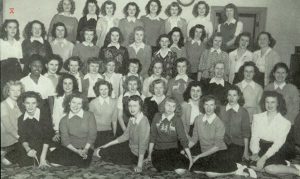 think it’s very cool, but not as cool as what I found next.
think it’s very cool, but not as cool as what I found next.
The second thing I found out about Aunt Evelyn…one that really doesn’t surprise me that much, because it is so very much in character for her, was that as a senior, she was a Big Sister. Now, I’m sure that you thought about her eight younger siblings, and thought, “Of course, she was! We knew that!” Her siblings are not the people I am talking about, however. In the late 1940s at Natrona County High School, there was a group of senior girls, all of whom were required to have a high three point grade average, and who possessed dependability and leadership skills. Being a part of a program like Big Brothers/Big Sisters, is something we have all heard about these days. It is a mentoring program. However, Big Sisters at Natrona County High School was a bit different than that. At the beginning of the school year, each of the Big Sisters were assigned three or four little sisters, who were sophomores. Basically the duties of a Big Sister were to give advise and help out in any way she can to make the transition from Junior High to High school a successful one for the little sisters. This aid might come 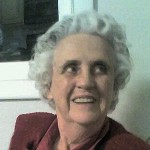 in the form of helping with Latin translation…or it could be help to find a date for the Co-Ed Ball, which was later named Football Ball. Many people who went by the Girls’ League room might have noticed Big and Little Sisters leaving notes on the bulletin board in the room…especially in the fall of the year. Of course, those notes were to ask or offer help with this or that, but many people wondered if the room was the Pony Express station, the post office, or the general exchange. They couldn’t have been more wrong, it was just a group of girls who were blessed enough to have a helper, or to be one. And, it makes me proud to know that my Aunt Evelyn was one of those amazing Big Sisters. Today would have been Aunt Evelyn’s 89th birthday. Happy birthday in Heaven, Aunt Evelyn. We love and miss you very much.
in the form of helping with Latin translation…or it could be help to find a date for the Co-Ed Ball, which was later named Football Ball. Many people who went by the Girls’ League room might have noticed Big and Little Sisters leaving notes on the bulletin board in the room…especially in the fall of the year. Of course, those notes were to ask or offer help with this or that, but many people wondered if the room was the Pony Express station, the post office, or the general exchange. They couldn’t have been more wrong, it was just a group of girls who were blessed enough to have a helper, or to be one. And, it makes me proud to know that my Aunt Evelyn was one of those amazing Big Sisters. Today would have been Aunt Evelyn’s 89th birthday. Happy birthday in Heaven, Aunt Evelyn. We love and miss you very much.
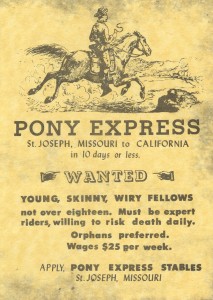 With this year marking the 155th anniversary of the Pony Express, there is much celebration in the arena of those who love to celebrate the history of the Pony Express. Every year the first couple of weeks in June find many riders marking the amazing accomplishments of the Pony Express by riding the route once again. The riders follow the original route from Saint Louis, Missouri to Sacramento, California. They travel on horseback, just as the original riders did, and they ride 24 hours a day, just as the riders before them. Today, June 20, 2015 puts them traveling through the state of Wyoming. They left Atlantic City, Wyoming June 20, 3:00am, Farson, Wyoming at 9:00am, Green River Crossing at 11:00am, Granger, Wyoming at 12:30pm, Uinta County Line at 1:00pm, Fort Bridger, Wyoming at 4:00pm, and cross the Wyoming/Utah state line at 9:00pm, arriving in This Is The Place Heritage Park in Utah in time to depart on Sunday, June 21, 3:30am, to continue on to their destination of Sacramento, California with a planned arrival at Old Sacramento, California on Thursday, June 25, 11:30am.
With this year marking the 155th anniversary of the Pony Express, there is much celebration in the arena of those who love to celebrate the history of the Pony Express. Every year the first couple of weeks in June find many riders marking the amazing accomplishments of the Pony Express by riding the route once again. The riders follow the original route from Saint Louis, Missouri to Sacramento, California. They travel on horseback, just as the original riders did, and they ride 24 hours a day, just as the riders before them. Today, June 20, 2015 puts them traveling through the state of Wyoming. They left Atlantic City, Wyoming June 20, 3:00am, Farson, Wyoming at 9:00am, Green River Crossing at 11:00am, Granger, Wyoming at 12:30pm, Uinta County Line at 1:00pm, Fort Bridger, Wyoming at 4:00pm, and cross the Wyoming/Utah state line at 9:00pm, arriving in This Is The Place Heritage Park in Utah in time to depart on Sunday, June 21, 3:30am, to continue on to their destination of Sacramento, California with a planned arrival at Old Sacramento, California on Thursday, June 25, 11:30am.
The Pony Express is one of the few services that achieved so much recognition in such a short history. The service opened officially on April 3, 1860, when riders left simultaneously from St. Joseph, Missouri, and Sacramento, California. The first westbound trip was made in 9 days and 23 hours and the eastbound journey in 11 days and 12 hours. The pony riders covered 250 miles in a 24-hour day. Eventually, it gre to more than 100 stations, 80 riders, and 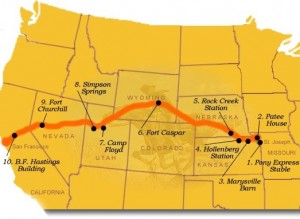 between 400 and 500 horses. Their delivery record was amazing in that during their run, only one mail delivery was lost. The service lasted only 19 months until October 24, 1861, when the completion of the Pacific Telegraph line ended the need for its existence.
between 400 and 500 horses. Their delivery record was amazing in that during their run, only one mail delivery was lost. The service lasted only 19 months until October 24, 1861, when the completion of the Pacific Telegraph line ended the need for its existence.
While it’s time was short, the Pony Exoress has become a beloved historic icon. In fact, in many ways, the service the Pony Express provided, makes our current mail service pale by comparison. I realize that there are many very good mail service workers, but there are also many who couldn’t care less about the mail they deliver, or the people sending or receiving it. They are, unfortunately, among the sorry generation of people who think a paycheck shouldn’t necessarily depend on the work performed, or not performed. That mentality was totally foreign to the Pony Express riders, who risked their very lives every day to make sure that communication in this great nation was possible. Happy 155th Anniversary to the Pony Express.
 I often wonder how it must have felt to live in a time when so many things were changing in ways that man had not seen before. Things like the automobile, the airplane, the light bulb, the telephone, and the telegraph, all came into being between the 1800s and the early 1900s. Prior to these things, our world was rather primitive concerning things like travel, communication, and even the home life…at least by today’s standards, anyway.
I often wonder how it must have felt to live in a time when so many things were changing in ways that man had not seen before. Things like the automobile, the airplane, the light bulb, the telephone, and the telegraph, all came into being between the 1800s and the early 1900s. Prior to these things, our world was rather primitive concerning things like travel, communication, and even the home life…at least by today’s standards, anyway.
When families began moving West to find land and adventure, it was often a very sad time, because many of these people would not see their loved ones again. They might not even hear from them. This really seemed like an unacceptable situation for most of the people on both sides of that spectrum. The people needed to hear from their loved ones, and so like every other idea, from necessity came a solution…the Pony Express. Prior to the Pony Express, people might try to send a letter with a wagon train heading West to see of they could manage  to get it to a loved one who had left a year or more before. Imagine the impossibility of that feat. The person with whom the letter was sent, might not even know the person to whom the letter was being sent. It meant asking around in the area they had planned to settle in, and if they had moved elsewhere…well that is the real definition of the dead letter.
to get it to a loved one who had left a year or more before. Imagine the impossibility of that feat. The person with whom the letter was sent, might not even know the person to whom the letter was being sent. It meant asking around in the area they had planned to settle in, and if they had moved elsewhere…well that is the real definition of the dead letter.
The Pony Express became the first dedicated postal service ever, on this day, April 3, 1860, but it was a far cry from the mail service of today, about which many of us complain. The men who chose to be Pony Express riders had to be told about what they might be riding into. There were Indians, who did not like the White Man. Treaties had been broken, and the White Man was considered an intruder on Indian land. To say that the White Man was not welcome in the West, was putting it mildly. Every time the Pony Express rider set out, he was taking on the risk of never coming back. The Help Wanted posters clearly stated the dangers, and the riders had to be single young men preferably under eighteen and preferably orphans!! Not a glowing help wanted ad, for sure, still there was a need, and these brave men took the challenge and made it work. The Pony Express was a short lived phenomenon, however, lasting just eighteen short months. I suppose something had to be done to make mailing a letter safer. At the point when the last Pony Express rider rode his route, the telegraph had somewhat 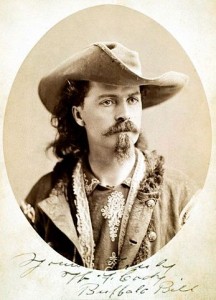 taken its place. Most what had been needed was to be able to let people about the death of loved ones and other urgent or important news, so it seemed like an unnecessary risk to place on these men, when a safe way had been found.
taken its place. Most what had been needed was to be able to let people about the death of loved ones and other urgent or important news, so it seemed like an unnecessary risk to place on these men, when a safe way had been found.
The first Pony Express rider to make the run has been a matter of dispute, but historians have narrowed it down to Johnny Fry or Billy Richardson. James Randall was credited with being the first Eastbound rider, heading out from San Francisco to Sacramento, and William (Sam) Hamilton took the mail from there to the Sportsman Hall Station, where he handed it off to Warren Upson. Other riders were Gus and Charles Cliff, Robert Haslam, Jack Keetley, Billy Tate, and the famous William Cody, known to most of us as Buffalo Bill. Together, these men rode into history as some of the bravest men who ever lived. Riding alone through dangerous territory, risking their lives to make life a little easier for the ever expanding nation we lived in.
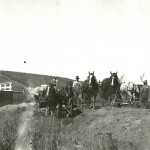 As I was sending out a text today, I began to think about the changes in communication we have had through the years. In the very early years of our nation’s history, when a child married and decided to move West, it sometimes meant that family members never heard from each other again, and if they did, it was hit and miss. I’m sure that there were many broken hearted parents as a result of those moves, and I am equally certain that those moves brought about the changes in communication that we see today.
As I was sending out a text today, I began to think about the changes in communication we have had through the years. In the very early years of our nation’s history, when a child married and decided to move West, it sometimes meant that family members never heard from each other again, and if they did, it was hit and miss. I’m sure that there were many broken hearted parents as a result of those moves, and I am equally certain that those moves brought about the changes in communication that we see today.
First, of course came the Pony Express, which while it greatly improved things, was still pretty slow, and news of family members passing or giving birth arrived quite some time after the fact. Not that anyone would have been able make it back in time, but it would be hard to find out after it is all over. The invention of the telephone greatly improved communication, and I’m sure people found it comforting to be able to hear the voice of their loved ones once again.
Today, with so many forms of communications, as well as ease of travel, we are able to see loved ones so often that we, maybe take it for granted. Even if you can’t be with family members, you can Skype, Video Chat, and Face Time, so not only can you hear their voice, but you can see their face, in real time.
Our modern communication abilities have maybe spoiled us to a degree. We have so many  ways to talk and travel, and yet, I don’t know about you, but one of the main ways we communicate…texting, is probably the least personal. It seems like in our busy world, it is easier to text and then wait for the answer, than to talk on the phone. The main reason for this is that you have to hold the phone to talk, so unless it is a long conversation, or one that should be held in a more personal way, we choose the more impersonal…texting. Many people think we text too, as a way of not being too social, and maybe that is so. It seems like we are becoming more of a solitary people in some ways. Still, texting, like the Pony Express, the postal service, the telegraph, telephone, computer, and cell phone are all ways of keeping in touch.
ways to talk and travel, and yet, I don’t know about you, but one of the main ways we communicate…texting, is probably the least personal. It seems like in our busy world, it is easier to text and then wait for the answer, than to talk on the phone. The main reason for this is that you have to hold the phone to talk, so unless it is a long conversation, or one that should be held in a more personal way, we choose the more impersonal…texting. Many people think we text too, as a way of not being too social, and maybe that is so. It seems like we are becoming more of a solitary people in some ways. Still, texting, like the Pony Express, the postal service, the telegraph, telephone, computer, and cell phone are all ways of keeping in touch.

